Welcome to the definitive guide for crafting the most exquisite and **easy homemade lemon curd** you’ll ever encounter. Step aside, bland store-bought versions filled with unnecessary preservatives, and prepare to elevate your culinary skills with a recipe that promises an unparalleled burst of bright, tangy lemon flavor and a luxuriously creamy, sweet texture. This incredible lemon curd requires just six simple ingredients and a relatively short amount of time, making it an accessible and rewarding project for both seasoned bakers and novice cooks alike. When you’re searching for the **best lemon curd recipe**, look no further; this guide is designed to ensure perfect results, every single time.

This wonderfully versatile **lemon dessert sauce** is an indispensable component in any kitchen, capable of transforming ordinary dishes into extraordinary culinary experiences. Imagine spooning generous dollops onto warm, fluffy scones, creating decadent layers within an elegant cake, piping delightful swirls onto light and airy cupcakes, or spreading it over classic muffins. Its vibrant **lemon flavor** is instantly uplifting, infusing a refreshing zest and gourmet elegance into everything it touches. Perfect for any recipe that calls for an extra touch of citrusy goodness, this homemade lemon curd is truly a game-changer. Discover how effortlessly you can add this bright, sweet, and tangy creation to your baking repertoire, making every treat feel special.
What Exactly Is Lemon Curd? Unveiling a Classic Culinary Delight
Lemon curd is a renowned dessert topping or spread, originating from Britain, celebrated for its intense, concentrated lemon essence and incredibly smooth, rich consistency. Unlike traditional fruit jams or marmalades, which are primarily fruit-based and rely on pectin for setting, lemon curd is a creamy custard. Its core ingredients typically include fresh lemon juice, aromatic lemon zest, egg yolks, granulated sugar, and generous amounts of butter. This specific combination, particularly the egg yolks and butter, is what imbues lemon curd with its characteristic velvety texture and deep, buttery richness, distinguishing it significantly from other fruit preserves.
The history of lemon curd dates back to the late 19th and early 20th centuries in England, where it first gained popularity as a spread for bread and scones during afternoon tea, serving a similar role to jam. Over the years, its delightful balance of tartness and sweetness, combined with its luxurious mouthfeel, led to its integration into a vast array of desserts, including tarts, pies, cakes, and various pastries. The true magic of lemon curd lies in its ability to deliver an authentic, powerful citrus punch derived from fresh lemons, a quality that is often diluted or lost in commercially produced alternatives.
While the convenience of **store-bought lemon curd** is undeniable, it often comes at the cost of flavor and quality. Commercial curds frequently contain a myriad of preservatives, artificial flavors, and thickening agents, which can result in a less vibrant taste, a duller color, and sometimes an undesirable gummy texture. The contrast between a jar from the supermarket shelf and a batch of **homemade lemon curd** is stark and truly incomparable. Crafting your own allows for meticulous control over each ingredient, guaranteeing a product that is pure, incredibly fresh, and bursting with an intensely authentic lemon flavor. This hands-on approach not only ensures superior taste but also offers peace of mind regarding what you consume. Therefore, we enthusiastically recommend experiencing the sheer joy and exceptional quality of making your **lemon curd from scratch**.
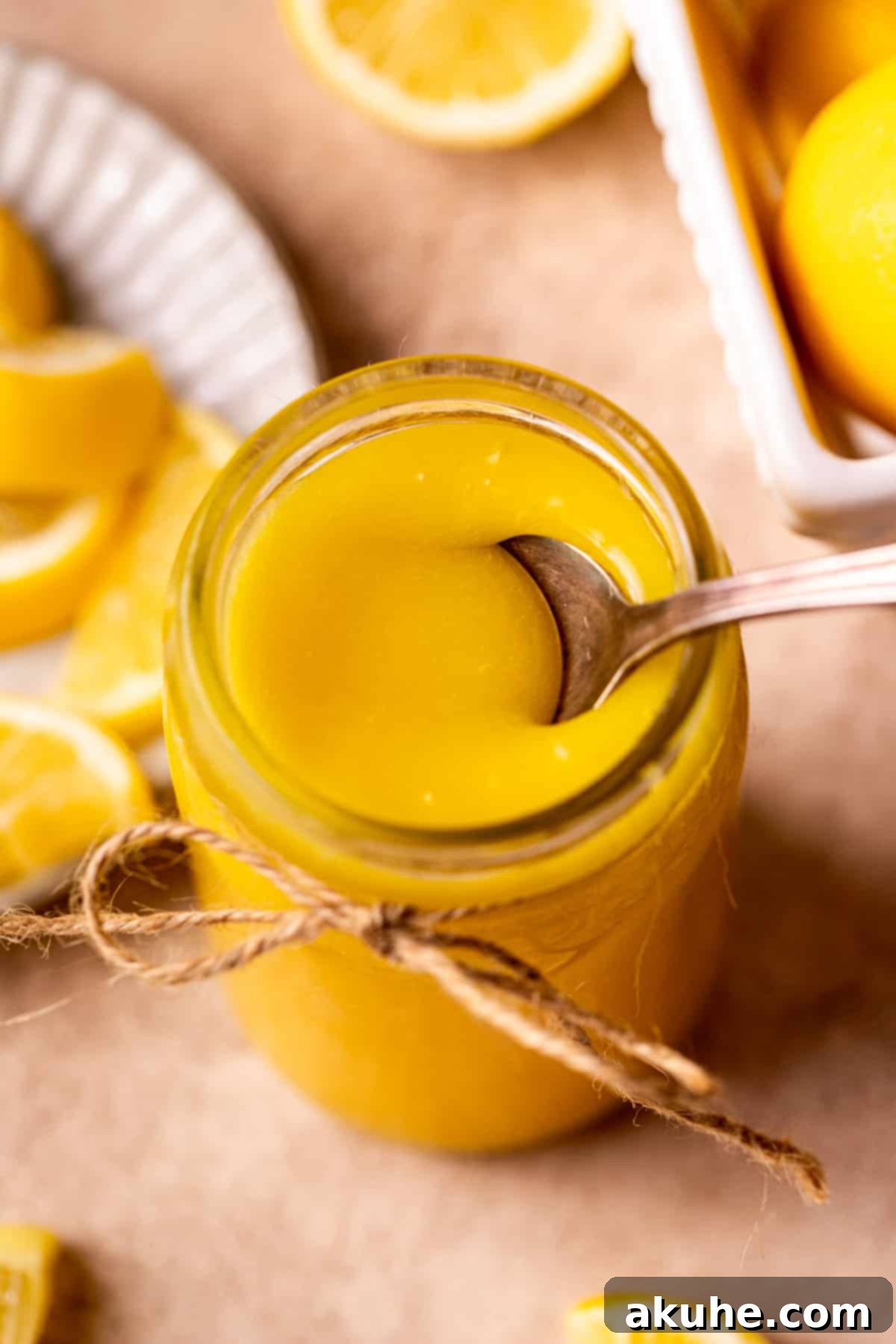
Why Choose Homemade Lemon Curd? The Unmatched Benefits of Baking from Scratch
Deciding to prepare **homemade lemon curd** rather than reaching for a store-bought jar brings a multitude of advantages that profoundly enhance your culinary experience. The most compelling reason is undoubtedly the superior flavor. Homemade curd delivers an unparalleled depth of taste, characterized by the bright, zesty tang of fresh lemons, perfectly harmonized with a delightful sweetness and rich, buttery undertones. This vibrant and authentic flavor profile is incredibly difficult for commercial products to replicate, as they often rely on less potent ingredients and artificial enhancers, resulting in a significantly muted lemon essence.
Furthermore, making your own lemon curd grants you complete authority over every single ingredient. This means you can entirely bypass the unpronounceable preservatives, artificial colors, and high-fructose corn syrup frequently found in mass-produced versions. Instead, you get to choose premium components: freshly squeezed lemon juice, highly aromatic lemon zest, wholesome farm-fresh egg yolks, pure granulated sugar, and high-quality unsalted butter. This direct control ensures a much healthier and more wholesome product for you, your family, and your guests, aligning perfectly with a desire for clean eating.
Beyond taste and ingredient control, the process of creating lemon curd from scratch is surprisingly gratifying and even therapeutic. It’s a wonderful opportunity to engage in a little kitchen magic, transforming simple, raw ingredients into a truly extraordinary creation. The comforting aroma of lemons filling your home as the curd gently simmers is an added sensory delight. Moreover, from an economical standpoint, preparing a batch of homemade lemon curd is often more cost-effective, particularly if you have an abundance of lemons. You’ll achieve a much larger yield for a fraction of the price of purchasing premium store-bought alternatives, offering excellent value.
Finally, the versatility of fresh, homemade lemon curd is unmatched. Its superior flavor and exquisite texture effortlessly elevate every dish it graces, from the simplest breakfast accompaniments to the most elaborate celebratory desserts. You can also customize the balance of tartness and sweetness to perfectly suit your personal preferences or the specific requirements of your recipe, something impossible with pre-made options. Once you discover the rich, vibrant taste and luxurious texture of lemon curd made in your own kitchen, you’ll find it incredibly challenging to ever revert to store-bought varieties.
Mastering the Art of Making Easy Lemon Curd: A Detailed Step-by-Step Guide
Crafting a perfectly luscious batch of **creamy lemon curd** can seem like a daunting task, but with this comprehensive and easy-to-follow guide, you’ll discover just how straightforward it is. The secrets to success lie in maintaining consistent whisking and utilizing gentle, controlled heat. These two factors are critical for preventing the egg yolks from scrambling and ensuring a smooth, velvety finish that defines excellent lemon curd. This **simple lemon curd recipe** leverages just six fundamental ingredients and requires approximately 30 minutes of active cooking, followed by an essential chilling period to achieve its ideal, spoonable consistency. Let’s embark on this delightful culinary adventure together!
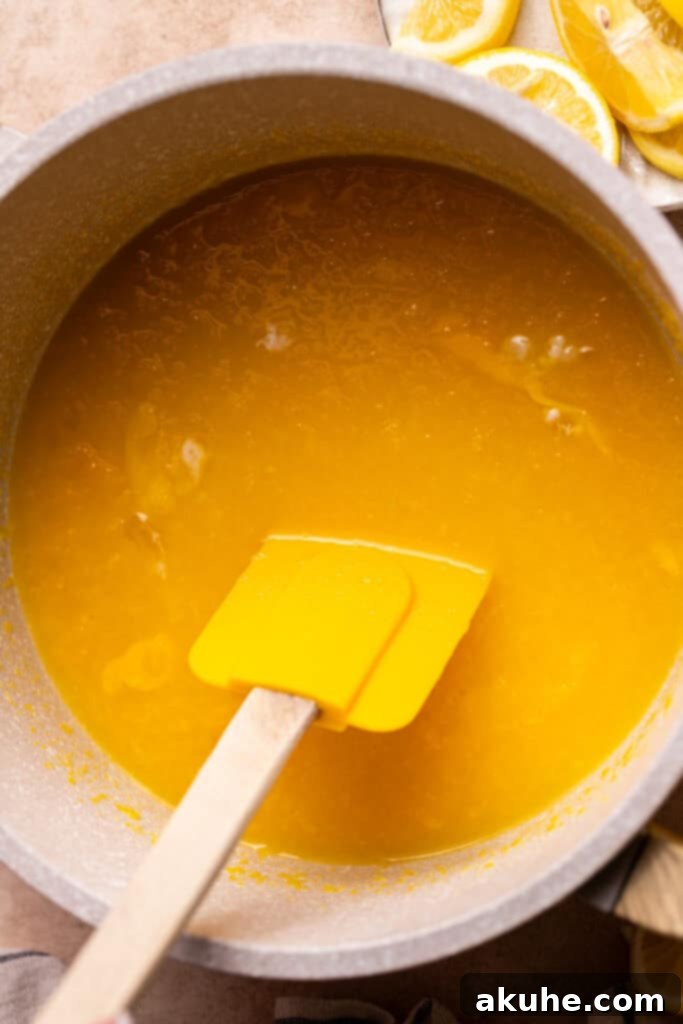
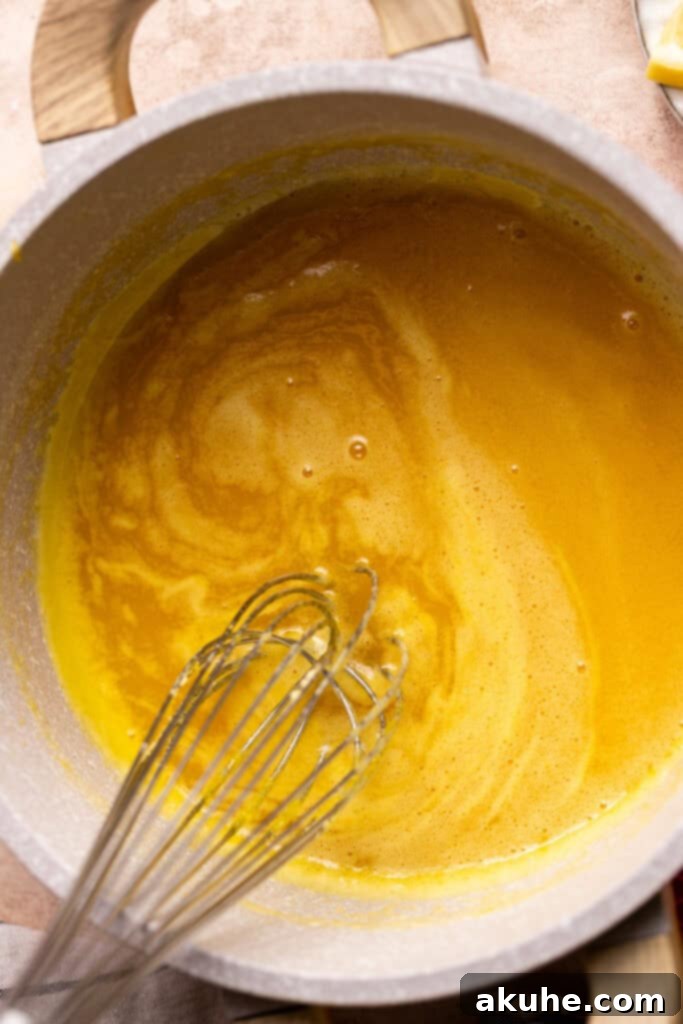
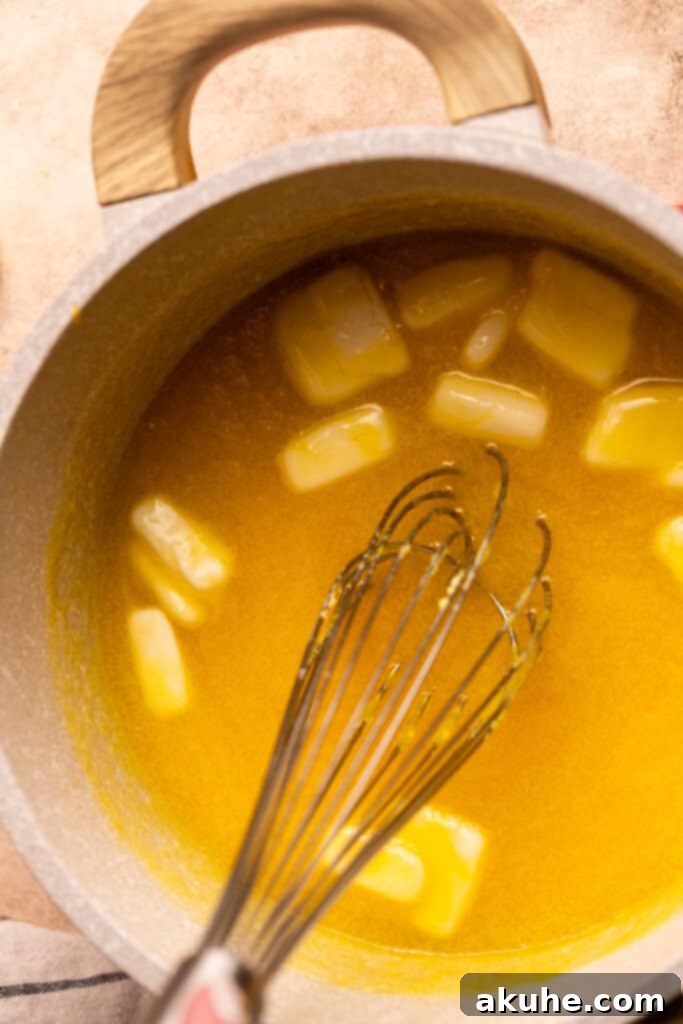
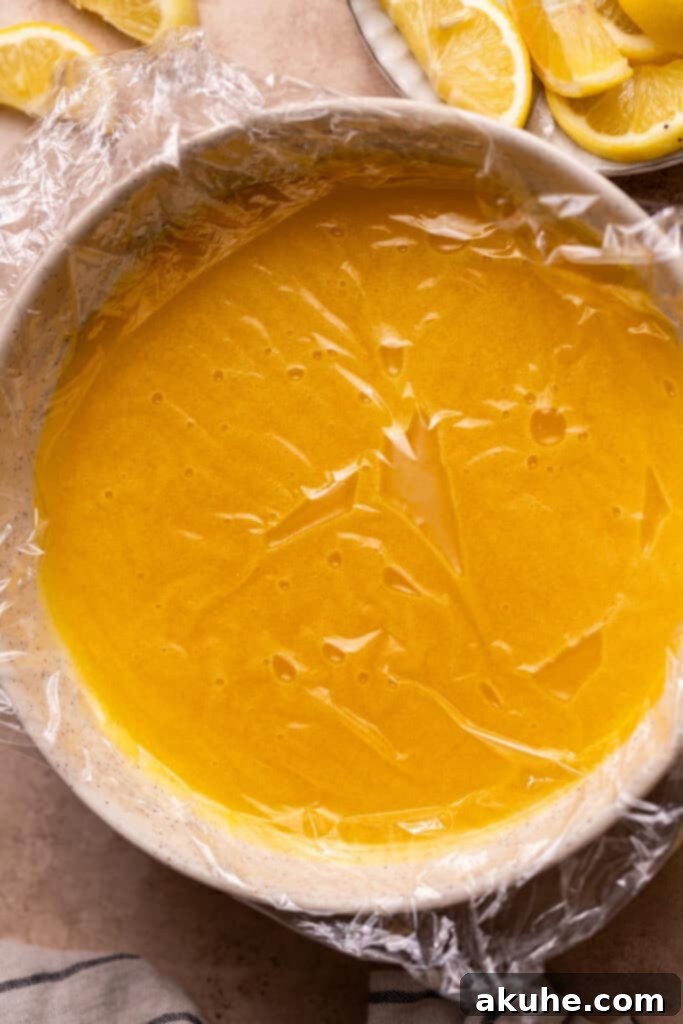
Easy Homemade Lemon Curd Recipe
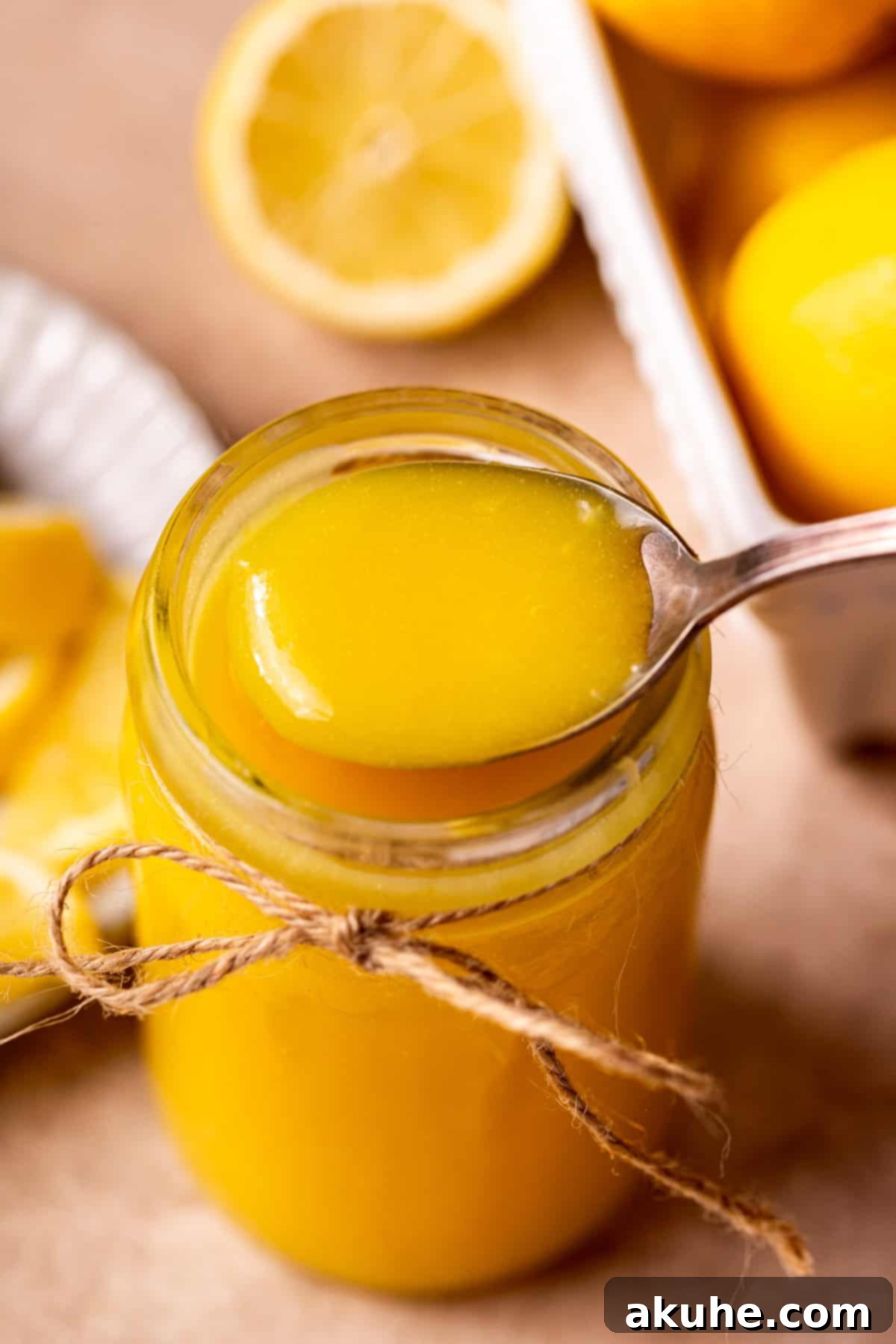
This incredibly simple 6-ingredient lemon curd recipe is your ticket to adding a bright, tangy, and exquisitely sweet flavor to virtually any dessert. It is wonderfully easy to prepare from scratch and consistently yields a beautifully creamy texture that far surpasses any store-bought alternative. Elevate your baking with this delightful homemade treat.
Prep Time: 10 minutes
Cook Time: 25 minutes
Chilling Time: 2 hours
Total Time: 2 hours 35 minutes
Yields: 2 cups
Ingredients
- 1/2 cup Freshly squeezed lemon juice (from approximately 2-3 large lemons)
- 1 TBSP Lemon zest (finely grated from 1 large lemon, avoiding the bitter white pith)
- 4 Large egg yolks
- 3/4 cup White granulated sugar
- Pinch of salt
- 1/2 cup Unsalted butter, kept cold and cut into small cubes
Instructions
- In a medium-sized, non-reactive saucepan (stainless steel or glass is ideal), combine the freshly squeezed lemon juice, finely grated lemon zest, egg yolks, granulated sugar, and the pinch of salt. Whisk these ingredients together until they are thoroughly combined and smooth before placing the saucepan over medium-low heat.
- Maintain medium-low heat and whisk the mixture constantly for approximately 20-25 minutes. Continuous whisking is absolutely vital during this stage to prevent the egg yolks from scrambling and to ensure a perfectly smooth and uniform consistency. Continue cooking until the lemon curd visibly thickens to a consistency similar to that of Greek yogurt or a pourable custard. You should be able to dip a spoon into the curd and run your finger across the back, leaving a clear line. Around the 20-minute mark, a light foamy layer may form on the surface, serving as an additional indicator that the curd is approaching readiness.
- Once the curd has achieved its desired thickness, immediately remove the saucepan from the heat. Add the cold, cubed unsalted butter directly into the hot curd. Whisk continuously until the butter is completely melted and fully incorporated into the mixture. This step contributes to the curd’s richness, glossy appearance, and ultra-smooth texture.
- Carefully pour the finished lemon curd into a clean, heat-proof container, such as a glass jar or bowl. To prevent a skin from forming on the surface as the curd cools, press a piece of plastic wrap directly onto the surface, ensuring there are no air bubbles. Allow it to cool at room temperature for a short while, then transfer it to the refrigerator. Chill for at least 2 hours, or until it is thoroughly cooled and properly set. Once completely cold and firm, store the lemon curd in an airtight container in the fridge for optimal freshness.
Nutrition Information (per serving, approximate)
- Calories: 827 kcal
- Carbohydrates: 81g
- Protein: 7g
- Fat: 56g
- Saturated Fat: 33g
- Polyunsaturated Fat: 3g
- Monounsaturated Fat: 16g
- Trans Fat: 2g
- Cholesterol: 511mg
- Sodium: 25mg
- Potassium: 127mg
- Fiber: 0.4g
- Sugar: 77g
- Vitamin A: 1943IU
- Vitamin C: 28mg
- Calcium: 66mg
- Iron: 1mg
Creative Ways to Enjoy Your Homemade Lemon Curd
Once you’ve successfully prepared this incredibly **easy lemon curd recipe**, a world of culinary possibilities opens up before you. Its vibrant flavor profile and luxurious, silky texture make it an outstanding complement to an extensive array of dishes, from comforting breakfast staples to sophisticated dessert centerpieces. Here are some of our most cherished ideas for incorporating this delightful spread into your everyday meals and special occasions:
- Classic Scones and Toast: Embrace tradition by spreading your homemade lemon curd generously on warm, freshly baked scones, often alongside clotted cream. It’s also heavenly on a simple slice of buttered toast, making for a truly indulgent breakfast or afternoon tea treat.
- Cakes and Cupcakes: Elevate your baked goods by using lemon curd as a delectable filling for multi-layered cakes, a tangy topping for light and fluffy cupcakes, or even gently swirl it into the batter before baking for a surprising burst of citrus flavor. It pairs exceptionally well with vanilla, coconut, almond, or berry-flavored cakes.
- Tarts and Pies: Transform your curd into an exquisite filling for a classic lemon meringue pie or tart. It can also be piped into delicate miniature tart shells for elegant individual desserts, often garnished with fresh berries or a dollop of whipped cream.
- Yogurt and Parfaits: Stir a spoonful of lemon curd into plain Greek yogurt for an instant, flavor-packed breakfast or snack. For a more elaborate treat, layer it with crunchy granola and your favorite fresh fruits to create a stunning and delicious parfait.
- Pancakes and Waffles: Drizzle warm lemon curd over a stack of fluffy pancakes or crispy waffles for a bright, zesty, and utterly satisfying brunch experience that will wake up your taste buds.
- Ice Cream Topping: A simple scoop of high-quality vanilla ice cream becomes a sophisticated dessert with a generous spoonful of warm lemon curd poured over it. The contrast of cold and warm, sweet and tart, is simply divine.
- Meringues and Pavlovas: The tartness of lemon curd beautifully complements the sweetness of meringues. Serve it alongside crisp meringue cookies or use it as a creamy, tangy filling for a show-stopping pavlova, adorned with fresh fruit.
- Cookies and Bars: Get creative by spreading lemon curd between delicate shortbread cookies, using it as a vibrant filling for thumbprint cookies, or baking it as a topping for lemon curd bars with a buttery shortbread crust.
- Fruit Salad Dressing: For a unique twist, gently fold a small amount of lemon curd into a fresh fruit salad. It acts as a tangy, creamy dressing that enhances the natural sweetness and flavors of the mixed fruits.
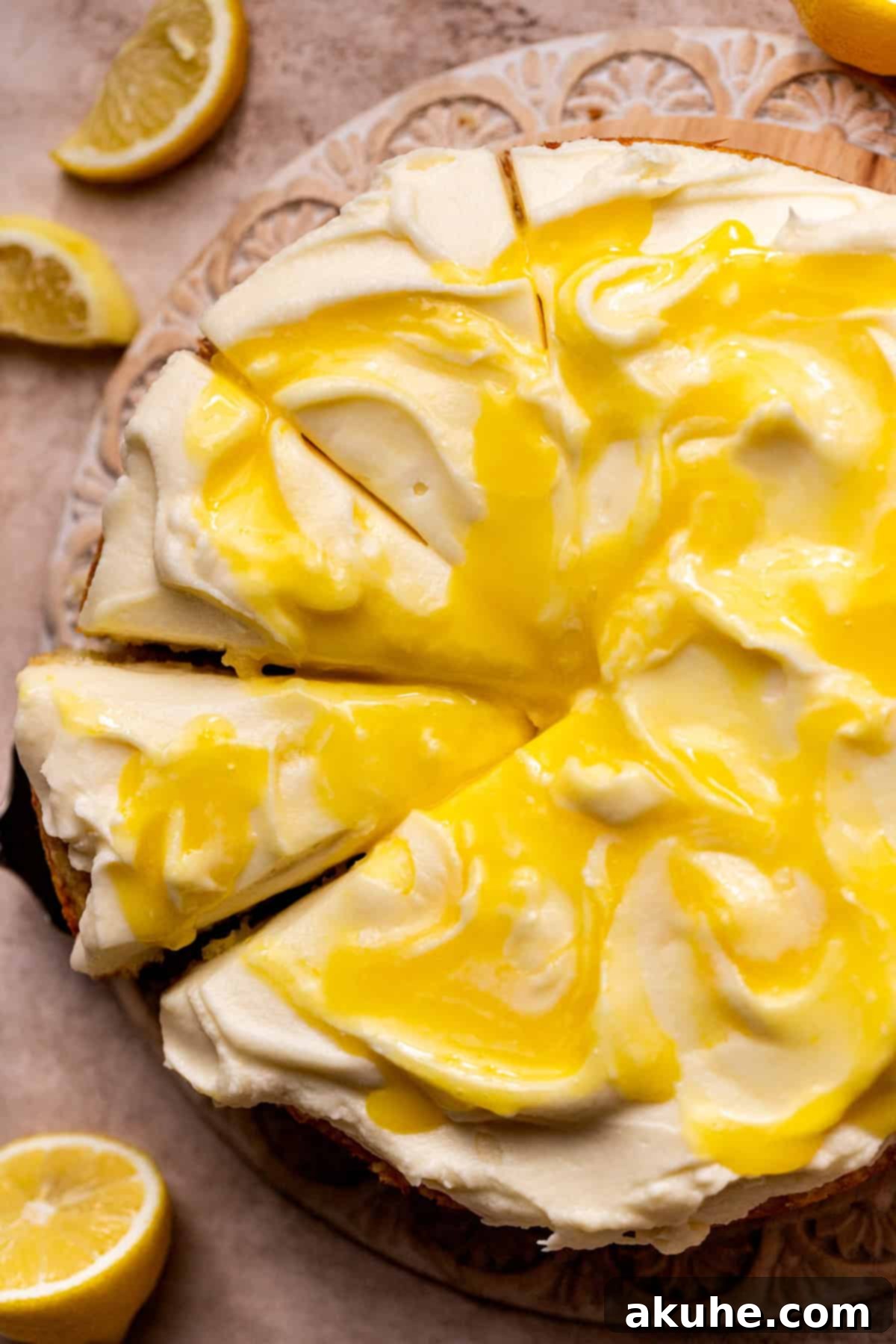
Tips for Perfect Lemon Curd Every Time & Troubleshooting Common Issues
Achieving a consistently perfect batch of **creamy lemon curd** is easily attainable when you adhere to a few fundamental tips and understand how to address common challenges that might arise during the cooking process.
- Emphasize Fresh Ingredients: The cornerstone of truly exceptional lemon curd is the use of freshly squeezed lemon juice and vibrant, aromatic lemon zest. Avoid using bottled lemon juice, as it often lacks the robust flavor and precise acidity essential for a superb curd. When zesting, use a microplane to ensure you capture only the bright yellow outer layer, diligently avoiding the bitter white pith beneath.
- Consistent Whisking is Paramount: This step cannot be overstated in its importance. Continuous whisking while the curd cooks over medium-low heat is crucial. It prevents the egg yolks from scrambling into lumps and ensures the development of a smooth, uniform texture. If you pause whisking for too long, you risk curdled eggs. Should you notice any small lumps, a fine-mesh sieve can be your savior; simply pass the warm curd through it after cooking, before adding the butter.
- Master the Low and Slow Heat: Patience is indeed a virtue when making lemon curd. Cooking it over a gentle, medium-low heat allows the eggs to cook slowly and evenly, permitting the mixture to thicken gradually without scorching or scrambling. Resisting the urge to increase the heat will yield far better results.
- Accurate Doneness Test: Your lemon curd is ready when it sufficiently coats the back of a spoon. To test, dip a spoon into the curd, lift it out, and draw a line through the curd on the back of the spoon with your finger. If the line holds and does not immediately run together, your curd has reached the correct consistency. Keep in mind that the curd will continue to thicken considerably as it cools in the refrigerator.
- The Magic of Cold Butter: Incorporating cold, cubed butter at the very end of the cooking process serves multiple critical functions. It effectively halts the cooking process, preventing overcooking, while simultaneously adding a luxurious richness and contributing significantly to the curd’s ultimate silky-smooth texture and beautiful glossy finish.
- Preventing a Skin Formation: The plastic wrap technique is indispensable. Immediately after pouring the hot curd into its container, press a piece of plastic wrap directly onto the surface of the curd. This direct contact eliminates air exposure, which is what causes a rubbery skin to form, ensuring your cooled curd remains perfectly smooth and inviting.
Troubleshooting Common Lemon Curd Issues:
- Curd is Too Thin: If your lemon curd isn’t thickening after the recommended cooking time, it’s most likely due to either insufficient heat or not whisking consistently enough. Return the saucepan to medium-low heat and continue whisking diligently. If, even after cooling, it remains excessively liquid, a last resort can be to whisk in a very small cornstarch slurry (about 1 teaspoon of cornstarch mixed with 1 teaspoon of cold water) and gently heat it again, whisking constantly until it reaches the desired thickness.
- Curd is Too Thick: Should your lemon curd become overly thick after chilling, you can easily rectify this. Gently whisk in a tablespoon or two of fresh lemon juice, or even a tiny bit of water or cream, until it achieves your preferred, spreadable consistency.
- Curd Has Lumps: Lumps in your lemon curd are almost always an indicator of scrambled egg bits. While not ideal, it’s often salvageable. Immediately pass the warm curd through a fine-mesh sieve. This will effectively strain out the lumps, leaving you with a much smoother (though perhaps slightly less vibrant) curd.
Storing Your Homemade Lemon Curd for Maximum Freshness
Proper storage is crucial for maintaining the quality, safety, and deliciousness of your **homemade lemon curd** over an extended period. Given its fresh ingredients, including eggs and butter, refrigeration is a mandatory requirement.
- Refrigeration Guidelines: Once your lemon curd has completely cooled down to room temperature, transfer it into a clean, airtight glass jar or another suitable container. Store this in your refrigerator for a period of up to 2-3 weeks. It is essential to ensure that the lid is tightly sealed. This not only preserves freshness but also prevents the curd from absorbing any unwanted odors or flavors from other items within your fridge.
- Freezing for Extended Shelf Life: For those who wish to enjoy their lemon curd beyond a few weeks, it freezes exceptionally well. Pour the thoroughly cooled curd into freezer-safe containers, leaving approximately half an inch of headspace at the top to accommodate for any expansion during freezing. Frozen lemon curd can be safely stored for up to 3 months. When you’re ready to use it, simply transfer the container from the freezer to the refrigerator and allow it to thaw overnight. Once thawed, give the curd a good whisk to restore its smooth and creamy consistency before serving. It is important to note that you should not refreeze curd that has already been thawed.
Frequently Asked Questions About Easy Homemade Lemon Curd
To help you perfect and enjoy your **easy homemade lemon curd**, here are answers to some of the most common questions we receive about making and using this delightful citrus spread.
- Can I use whole eggs instead of just egg yolks in this recipe?
- While some lemon curd recipes do call for whole eggs, using only egg yolks, as specified in this recipe, is highly recommended. Egg yolks contribute significantly to a richer, creamier, and more vibrantly colored curd. Whole eggs can result in a slightly thinner texture and a less luxurious mouthfeel. For the absolute best consistency and flavor, sticking to egg yolks is key.
- What should I do if my lemon curd doesn’t thicken during cooking?
- The most frequent reason for a thin curd is either not cooking it long enough or not maintaining consistent, adequate heat. Ensure you cook it over a steady medium-low heat, whisking constantly, until it visibly thickens and coats the back of a spoon, leaving a clean trail when a finger is run across it. Remember, the curd will also continue to thicken considerably as it cools and sets in the refrigerator.
- How can I prevent my lemon curd from acquiring a metallic taste?
- To avoid any metallic off-flavors, it is crucial to use non-reactive cookware. Opt for saucepans made of stainless steel, glass, or ceramic. Aluminum or cast iron pans, particularly those that are not enameled, can react with the high acidity of the lemon juice, potentially imparting an undesirable metallic taste to your finished curd.
- Is it possible to adapt this recipe for other citrus fruits?
- Absolutely! This recipe is wonderfully adaptable for creating other citrus curds. You can easily substitute the lemon juice and zest with the juice and zest of your preferred citrus fruit, such as limes, oranges, or even grapefruits. You might need to make slight adjustments to the sugar content, depending on the inherent sweetness or tartness of the fruit you choose.
- Is homemade lemon curd gluten-free?
- Yes, this **homemade lemon curd** recipe is naturally gluten-free. This makes it a fantastic and safe treat for individuals with gluten sensitivities or those following a gluten-free diet, provided it is served with gluten-free accompaniments like gluten-free scones or cakes.
- How much lemon zest is ideal for the best flavor?
- This recipe specifically calls for 1 tablespoon of lemon zest, typically obtained from one large lemon. The zest is incredibly important because it contains the majority of the lemon’s essential oils, which are responsible for the fruit’s intense aroma and vibrant flavor. Be sure to zest only the bright yellow outer layer, as the white pith beneath can introduce a bitter taste.
If you’ve loved creating and savoring this incredible **easy homemade lemon curd**, we would be absolutely delighted if you could leave astar review and share your cooking experience! Your invaluable feedback not only helps our community grow but also inspires other aspiring bakers to try this truly delightful recipe. We also encourage you to showcase your beautiful culinary creations by tagging me on Instagram @stephaniesweettreats. For an abundance of additional delicious ideas and continuous culinary inspiration, make sure to follow me on Pinterest. Happy baking, and enjoy every zesty bite!
